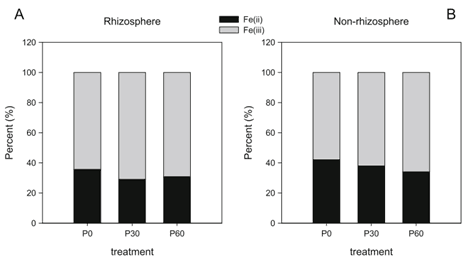作 者:Du, J.N.,Liu, J.C.,Lu, H.L., Hansell, D.,Zhang, Q.O., Wang, W.Y.,Yan, C.L. 影响因子: 2.76
刊物名称: Environment Science Pollution Research
出版年份:2015
卷:22 页码:13506-13513
In this study, a pot experiment was conducted to evaluate the effect of phosphate (PO43 −) addition on iron (Fe) cycling in mangrove ecosystem.Kandeliaobovata(S. L.), one of the dominant mangrove species in the southeast of China, was cultivated in rhizoboxes under three different levels of P concentrations. Results showed the solid-phase Fe distribution and Fe(II)/Fe(III) values in both the root zone (rhizosphere) and bulk soil (non-rhizosphere) were comparable among all P levels (p>0.05); P addition significantly decreased the pore water Fe content both in the rhizosphere and non-rhizosphere zone (p<0 .05); higher amount of reactive fe was found in rhizosphere sediments, while in the non-rhizosphere sediments, higher concentration of crystalline fe was determined; p significantly increased iron plaque formation and iron accumulation inK. obovata(S. L.) tissues (p<0 .05); p addition increasedK. obovata(S. L.) biomass and chlorophyll content. It was suggested that P is implicated in the Fe cycling in mangrove plants; more reactive iron, higher abundance of root Fe-reducing bacteria (FeRB) and Fe-oxidizing bacteria (FeOB),and together with higher amount ofK. obovata(S. L.) root organic acids exudation result in a rapid Fe cycling in rhizosphere, which contribute to comparable solid-phase iron distribution among different P levels.

Fig. 2.Fe(II)/Fe(III) mineral proportion distribution both in the rhizosphere (a) and non-rhizosphere sediments (b) under all treatments

